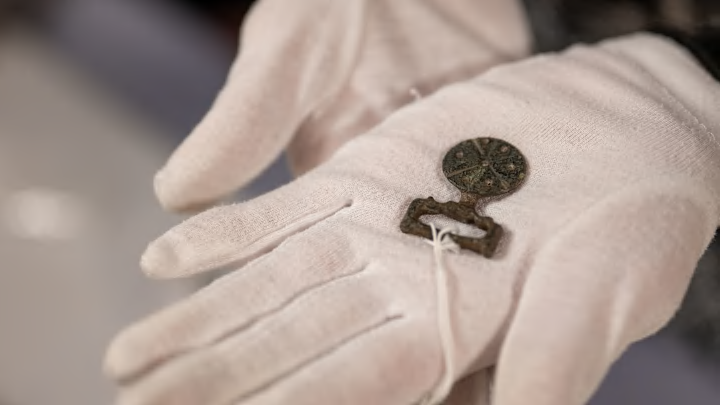Thrift shops are known for selling second-hand items, but there are some hidden gems under those piles of stuff. People have spotted valuable finds, from an 1823 edition of the Declaration of Independence to an 18th-century Chinese censer. As it turns out, a thrift shop in British Columbia may have struck gold with a donation from one customer.
A Spectacular Thrift Store Find

According to Smithsonian, the Thrifty Boutique in Chilliwack, British Columbia, received a donation of objects that could potentially be over 1000 years old. The set consists of 11 rings and two medallions. They were on sale for a mere 30 Canadian dollars (about $21 U.S. dollars). An unidentified man, who happened to be an archaeologist, was perusing the store when he noticed the items. He brought them to an employee’s attention and recommended that they contact the archaeologists at the province’s Simon Fraser University.
Researchers at the institution were initially hesitant to accept the artifacts because they lacked proper documentation—which could mean that they were stolen elsewhere before being donated. After about a year of negotiations, the experts accepted the medallions and rings to prevent them from reaching the private antiquities market. However, this isn’t the typical protocol for the school; the university usually needs to know where these kinds of relics come from before studying them.
You May Also Like:
- Your Thrift Store Finds Probably Have Bugs in Them—Here’s How to Tell
- The 10 Best U.S. Cities for Thrift Shopping
- 9 Secrets of Thrift Store Employees
Add Mental Floss as a preferred news source!
The mysterious items are now at the university’s Museum of Archaeology and Ethnology in Burnaby. Associate Professor Sabrina Higgins suspects the items could date back to the 4th or 5th century and be from somewhere that was once part of the the Western Roman Empire, based on their unique shapes and designs.
Students will study the medallions and rings next fall, learning the process of artifact accession and how to use technology to examine them. Higgins says it could take longer than a semester to definitively determine where these artifacts came from. And, as Smithsonian reports, the students could even uncover that the items are actually fake—a scenario that would provide an interesting lesson in forgery.
